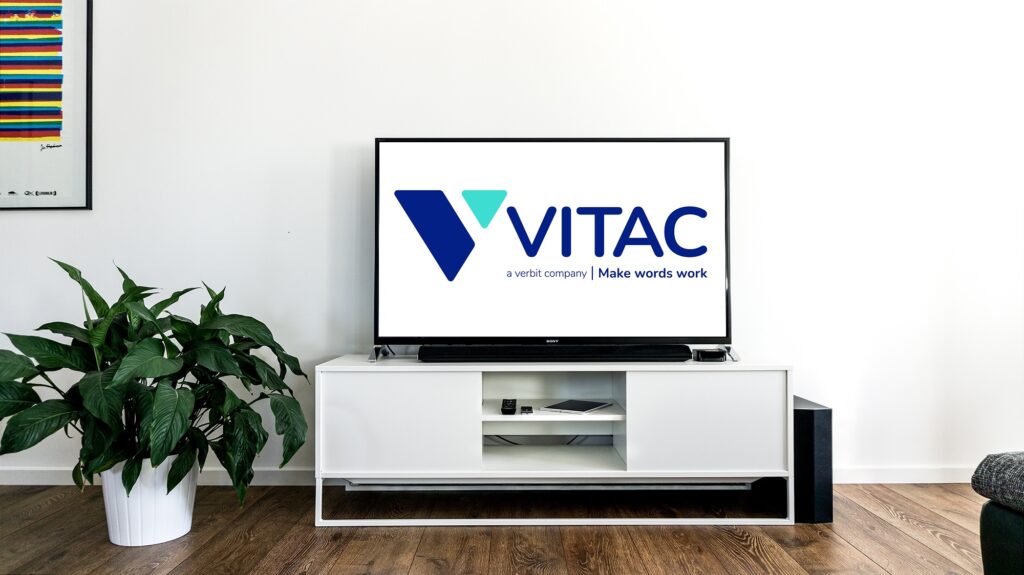Calling all realtime captioners! We’re hiring RCs! What should you know before you apply? Are you qualified?
VITAC hires highly skilled steno and voice court reporters specialized in captioning live television.
Realtime Captioner Trainer Sharon Siatkowski, RPR, CRC, CRR answered some of our most frequently asked questions for those thinking about a captioning career with VITAC:
Q: I want to work for VITAC as a realtime captioner. What can I do to improve my chances?
A: Just as you must have excellent skills and be well-versed in court procedures when applying for an official court reporting position, and just as you must know the art of freelance deposition reporting before applying to a firm, so too must you know the business of captioning.
Q: What does that mean?
A: Above all, you must be able to write and speak television. The initial round of the application process for a remote position is submitting first-run files from TV programs. In reviewing these files, we look for near-perfect translation, because that’s your job as a captioner: to provide near-perfect translation of TV programming.
Q: What speed does a captioner using steno need?
A: No less than graduation speed of 200-225 wpm. The syllabic density of captioning material will be far more difficult to handle than normal judicial material. Captioning is a highly specialized segment of the reporting field and demands the best of skills: speed, accuracy, and broad knowledge in all television-related areas.
Q: Can a student really be hired as a captioner directly out of court reporting school?
A: Yes, but in most cases, graduates have applied for in-house positions, where we can watch more closely and provide intensive, technically sophisticated training.
Q: Do I need to attend the VITAC Captioning Boot Camp or other training?
A: While a captioning boot camp is not absolutely necessary, a record of attendance is a plus when you apply for a captioning job. It can help demonstrate that you understand dictionary development and management, the technical side of captioning, research methodologies, and other essentials. It gives you an edge in your effort to stand out among other candidates.
Q: Can I come to VITAC for training?
A: Unfortunately, no, unless we’ve hired you to work for us.
Q: What will you look for in the sample files that I send?
A: Near-perfect verbatim translation. A tall order, we know, but that’s the job for which you’re applying. We’ll read your files word-for-word to evaluate accuracy, theory compatibility, content, comprehension, dictionary development, ability to fingerspell, and other keys to professionalism.
Word-for-word reading is the standard process for every aspiring or new captioner. It is the only way to truly perfect your translation – reading every word, deciphering and diagnosing each error, resolving theory issues to avoid the same or similar errors in the future. Every error has a root cause, whether it is a fingering error, an untranslate, an unknown word, a key adjustment problem or a theory issue. You need to analyze each error and resolve its cause to prevent it or similar errors down the road.
Q: How do I know if I’m ready to send in a sample file?
A: A good indicator of when you’re ready is an average of no more than three errors per page, including punctuation. When completing a word-for-word review of your file, count the errors. Also, how do your captions stand up to the captions you see on television? If your error count is low and your captions are as good or nearly as good as what you are seeing on air, then you’re ready to submit the file.
Q: Once I’ve qualified through file submissions, what’s the next step for in-house or remote employment?
A: We will set up a phone or in-person interview – depending on your location – during which we will together attempt to find out if this job is for you and if you are the person for the job. We will discuss job requirements, work schedules, income, what VITAC expects of you, and what you expect from us.
If you are hired for an in-house position, we will talk about relocation issues and a start date. If you are hired for a remote position, we will bring you to our Pittsburgh headquarters for approximately one week of training that will include instruction on the software and hardware, your communication with the office on and off the air, your connection to our internal network, and other company policies and procedures. You will meet with our human-resources team to go over your compensation and benefits package, and get to know the people with whom you will be interacting once you get back home and begin your new captioning job.
Q: Equipment and software – does VITAC supply them?
A: VITAC provides its employees with all necessary equipment and software.
Think you’re ready to join our Realtime team? Send an email to rcinfo@vitac.com with any inquiries!



